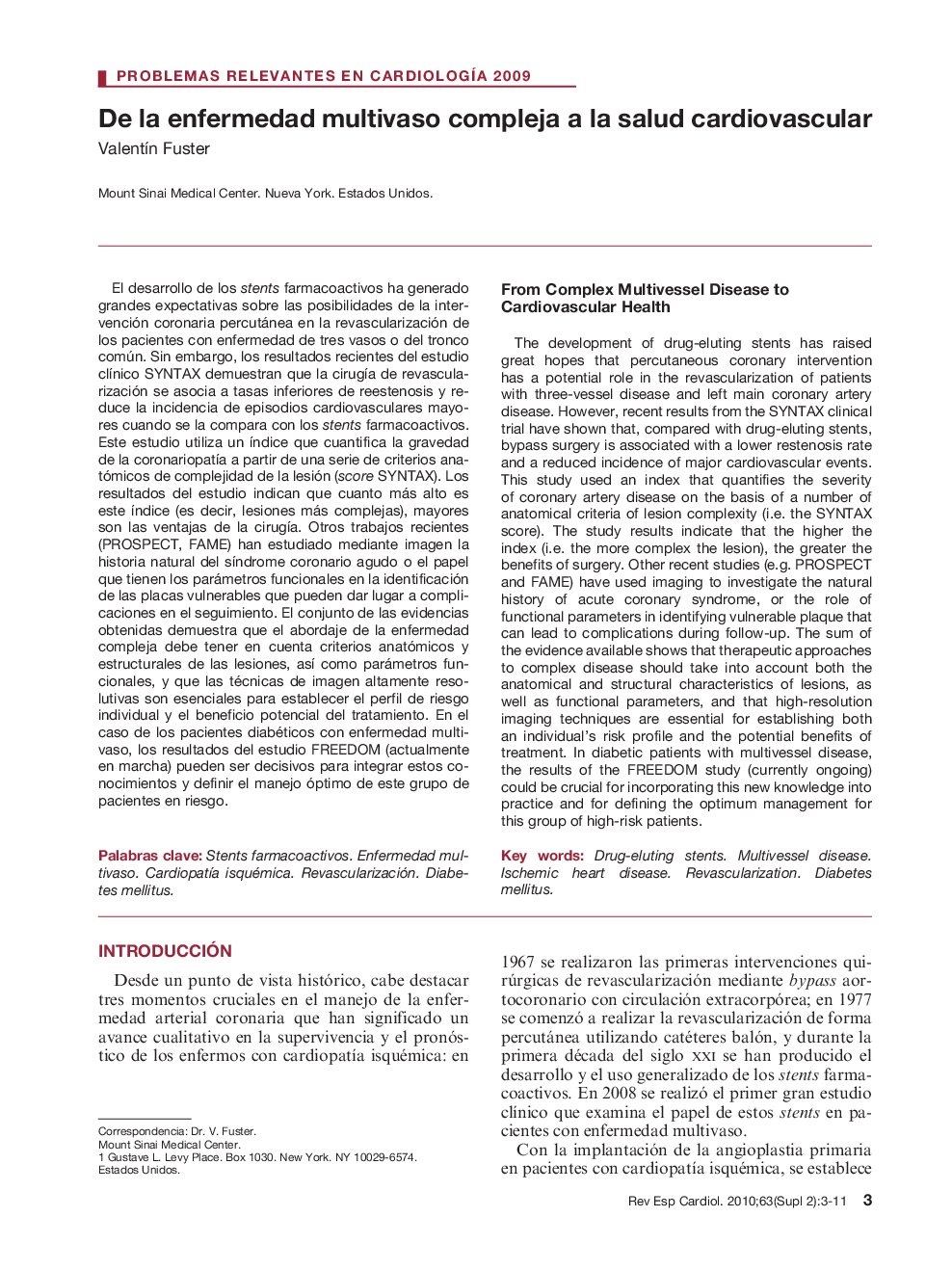| Article ID | Journal | Published Year | Pages | File Type |
|---|---|---|---|---|
| 3015654 | Revista Española de Cardiología | 2010 | 9 Pages |
El desarrollo de los stents farmacoactivos ha generado grandes expectativas sobre las posibilidades de la intervención coronaria percutánea en la revascularización de los pacientes con enfermedad de tres vasos o del tronco común. Sin embargo, los resultados recientes del estudio clínico SYNTAX demuestran que la cirugía de revascularización se asocia a tasas inferiores de reestenosis y reduce la incidencia de episodios cardiovasculares mayores cuando se la compara con los stents farmacoactivos. Este estudio utiliza un índice que cuantifica la gravedad de la coronariopatía a partir de una serie de criterios anatómicos de complejidad de la lesión (score SYNTAX). Los resultados del estudio indican que cuanto más alto es este índice (es decir, lesiones más complejas), mayores son las ventajas de la cirugía. Otros trabajos recientes (PROSPECT, FAME) han estudiado mediante imagen la historia natural del síndrome coronario agudo o el papel que tienen los parámetros funcionales en la identificación de las placas vulnerables que pueden dar lugar a complicaciones en el seguimiento. El conjunto de las evidencias obtenidas demuestra que el abordaje de la enfermedad compleja debe tener en cuenta criterios anatómicos y estructurales de las lesiones, así como parámetros funcionales, y que las técnicas de imagen altamente resolutivas son esenciales para establecer el perfil de riesgo individual y el beneficio potencial del tratamiento. En el caso de los pacientes diabéticos con enfermedad multivaso, los resultados del estudio FREEDOM (actualmente en marcha) pueden ser decisivos para integrar estos conocimientos y definir el manejo óptimo de este grupo de pacientes en riesgo.
The development of drug-eluting stents has raised great hopes that percutaneous coronary intervention has a potential role in the revascularization of patients with three-vessel disease and left main coronary artery disease. However, recent results from the SYNTAX clinical trial have shown that, compared with drug-eluting stents, bypass surgery is associated with a lower restenosis rate and a reduced incidence of major cardiovascular events. This study used an index that quantifies the severity of coronary artery disease on the basis of a number of anatomical criteria of lesion complexity (i.e. the SYNTAX score). The study results indicate that the higher the index (i.e. the more complex the lesion), the greater the benefits of surgery. Other recent studies (e.g. PROSPECT and FAME) have used imaging to investigate the natural history of acute coronary syndrome, or the role of functional parameters in identifying vulnerable plaque that can lead to complications during follow-up. The sum of the evidence available shows that therapeutic approaches to complex disease should take into account both the anatomical and structural characteristics of lesions, as well as functional parameters, and that high-resolution imaging techniques are essential for establishing both an individual's risk profile and the potential benefits of treatment. In diabetic patients with multivessel disease, the results of the FREEDOM study (currently ongoing) could be crucial for incorporating this new knowledge into practice and for defining the optimum management for this group of high-risk patients.
